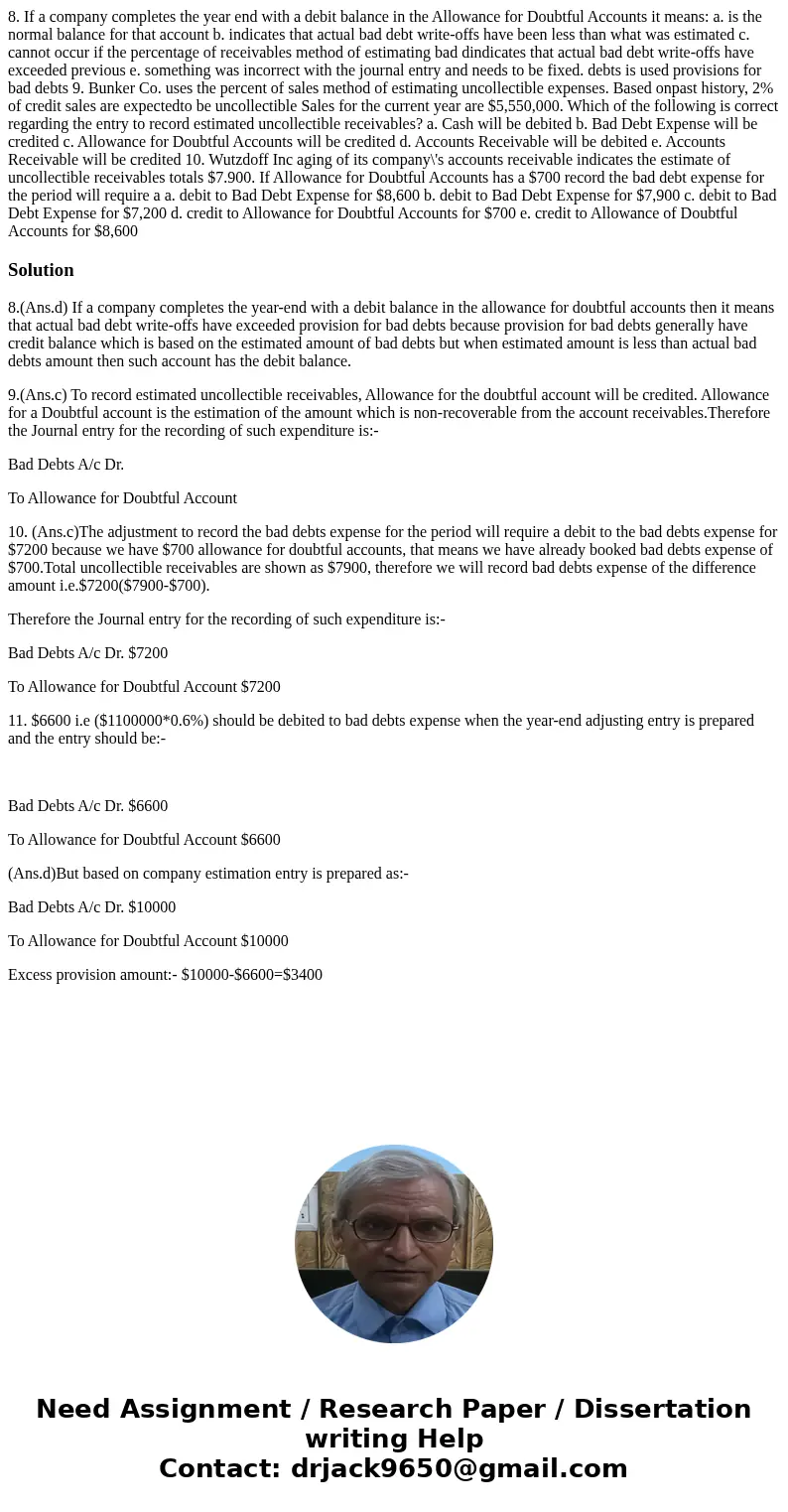8 If a company completes the year end with a debit balance i
Solution
8.(Ans.d) If a company completes the year-end with a debit balance in the allowance for doubtful accounts then it means that actual bad debt write-offs have exceeded provision for bad debts because provision for bad debts generally have credit balance which is based on the estimated amount of bad debts but when estimated amount is less than actual bad debts amount then such account has the debit balance.
9.(Ans.c) To record estimated uncollectible receivables, Allowance for the doubtful account will be credited. Allowance for a Doubtful account is the estimation of the amount which is non-recoverable from the account receivables.Therefore the Journal entry for the recording of such expenditure is:-
Bad Debts A/c Dr.
To Allowance for Doubtful Account
10. (Ans.c)The adjustment to record the bad debts expense for the period will require a debit to the bad debts expense for $7200 because we have $700 allowance for doubtful accounts, that means we have already booked bad debts expense of $700.Total uncollectible receivables are shown as $7900, therefore we will record bad debts expense of the difference amount i.e.$7200($7900-$700).
Therefore the Journal entry for the recording of such expenditure is:-
Bad Debts A/c Dr. $7200
To Allowance for Doubtful Account $7200
11. $6600 i.e ($1100000*0.6%) should be debited to bad debts expense when the year-end adjusting entry is prepared and the entry should be:-
Bad Debts A/c Dr. $6600
To Allowance for Doubtful Account $6600
(Ans.d)But based on company estimation entry is prepared as:-
Bad Debts A/c Dr. $10000
To Allowance for Doubtful Account $10000
Excess provision amount:- $10000-$6600=$3400

 Homework Sourse
Homework Sourse